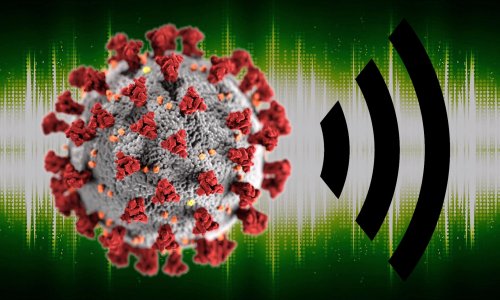In the fight against the coronavirus, early and accurate diagnosis is vital. To this day most common tests still rely on antibodies, therefore results are often only conclusive after several days and not reliable enough.
Researchers in the field of automated cough classification have been working on another strategy: They adapted a supervised machine-learning algorithm that detects slight differences in coughs and can diagnose or rule out respiratory infections accordingly.
This tool is supposed to automatically identify cough sounds and define them pursuant to certain parameters. AI makes it possible to compare patterns with other coughs and diagnose instantaneously. Cough sounds are especially informative because the sounds correlate with tissue structure in the respiratory organs, in addition to providing insight to the behavior of surrounding organs and structures.
The most challenging aspect of the studies is to find the most significant features, on which grounds to train the machine-learning system. The Massachusetts Institute of Technology has based their program on the four attributes: Muscular degradation, vocal cord strength, sentiment as well as respiratory and lung performance (Saplakoglu, 2020). For their program thousands of volunteers uploaded forced coughs and filled out information on their health status, symptoms and covid infection. While a large group of cases were then used to train the machine-learning system, another was used to function as a test group. Although results were very encouraging, transferring this success out of the laboratory provided a challenge, since cough sound not only vary on respiratory function, but many other parameters, such as mother-tongue and gender. Therefore investigation continued and showed that time-frequency representation of a cough successfully aided in achieving higher quality results. So far the best model is Random Forest with an accuracy of 90% (Tena, Clarià and Solsona, 2022).
These cough related covid tests have the potential to contain the pandemic in a more efficient way, as they would – if installed as an app on phones – not need high cost data evaluation in labs and would therefore be more easily accessible and affordable. Also AI can spot covid infections sooner than rapid covid tests can and would therefore be a strong advantage to the prevention of high spreading.
References
Saplakoglu, Y. (2020). Newsela [online] newsela.com. Available at: https://newsela.com/read/ai-detect-covid19-cough/id/2001015957/%C2%A0/https://newsela.com/read/ai-detect-covid19-cough/id/2001015957/%C2%A0/ [Accessed 2 Oct. 2022].
Tena, A., Clarià, F. and Solsona, F. (2022). Automated detection of COVID-19 cough. Biomedical Signal Processing and Control, [online] 71, p.103175. doi:10.1016/j.bspc.2021.103175. Available at: https://www.sciencedirect.com/science/article/pii/S1746809421007722 [Accessed 1 Oct. 2022].
Detecting COVID-19 through cough sounds. (n.d.). www.nature.com. [online] Available at: https://www.nature.com/articles/d42473-022-00294-9 [Accessed 2 Oct. 2022].


